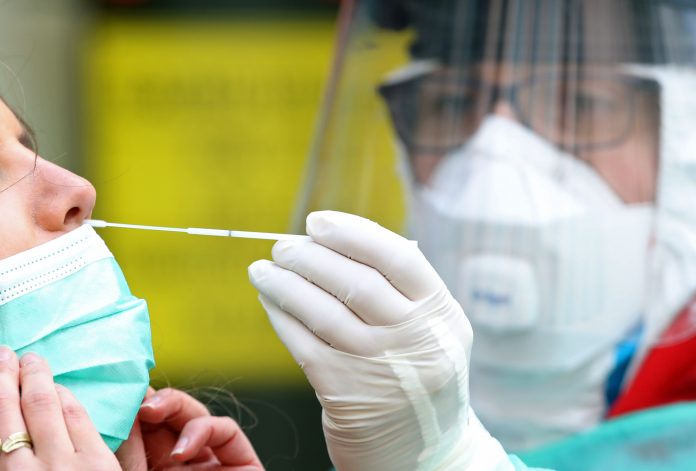A new report by the Public Accounts Committee found that the UK Test and Trace strategy, costing roughly £37 billion over two years, failed to ever meet 24 hour test result deadlines
Earlier in the year, the Science and Technology Committee examined the decision-making behind the UK’s COVID response.
The report pointed to a “lack of transparency” about who the scientists of SAGE were, and what sources they were using to give their advice. The UK Government did not have a strong outcome in the first wave, as hospitals filled to capacity, care homes were hit hard, socio-economic inequalities were highlighted and tracing strategies were overwhelmed.
£37 billion for the NHS Test and Trace system
Today (10 March), the Public Accounts Committee has released an investigation into the Test and Trace system – including where £37 billion went.
In May, 2020, the “NHS Test and Trace” system was given a budget of 22 billion. According to the World Health Organisation, testing and containment of a viral outbreak was a huge part of stopping hospitalisation and deaths.
Right now, over 125,000 people in the UK have died from the virus.
A study published in The Lancet warned that a lack of appropriate testing would result in the wave of deaths that occurred over December, at which time the NHS was overwhelmed with hospitalisation.
Leader of the study, Dr Jasmina Panovska-Griffiths, UCL/Oxford, commented: “However, without sufficient coverage of a test-trace-isolate strategy the UK risks a serious second epidemic peak either in December or February. Therefore, we urge the government to ensure that test-trace-isolate capacity is scaled up to a sufficient level before schools reopen.”
In July 2020, Sir Patrick Vallance commented to the science and technology select committee that: “it was very difficult to scale [contact tracing] on the basis of what Public Health England was able to do at the time.”
UK Test and Trace was meant to stop further lockdowns
The Test and Trace system was created to stop the second lockdown, but two more followed its inception.
On top of the original £22 billion, the programme has received a further £15 billion. So, how effective has it been at stopping the spread of COVID in the UK?
The report acknowledges that assembling an immense Test and Trace system in a short amount of time has been “set up and staffed at incredible speed”, with daily testing capacity at 800,000 now. With this in mind, the report recommends that the system “wean itself off” relying on expensive consultants and temporary staff.
Since the creation of the Test and Trace system, there have been two urgently needed lockdowns. This exact impact of the Test and Trace system is under question, especially when it comes to reducing infection levels.
The Test and Trace system appears to have been unhelpful in the attempt to return to schools in September, 2020. Specifically, local authorities and NHS primary care bodies felt cut out of the rollout of testing and tracing. Their expertise was generally unused, which could have come in handy to track hard to reach communities. When it comes to schools, the same feeling of neglect persists with education leaders in local communities.
The system also failed to ever meet 24 hour results deadlines for face-to-face testing – meaning that there was a higher likelihood of spreading COVID while waiting for a positive result.
‘Consultants at £1000 a day’
Meg Hillier MP, Chair of the Public Accounts Committee, commented: “The £22 billion for test and trace is about the annual budget of the Department for Transport. Test and Trace still continues to pay for consultants at £1000 a day.
“Yet despite the unimaginable resources thrown at this project Test and Trace cannot point to a measurable difference to the progress of the pandemic, and the promise on which this huge expense was justified – avoiding another lockdown – has been broken, twice.
“British taxpayers cannot be treated by Government like an ATM machine. We need to see a clear plan and costs better controlled.”
The report recommends that the infrastructure remains in place
The Committee want this infrastructure to be used again in the future, but there is no available suggestion of how it will be used or adapted by the UK Government for potential future scenarios of infectious disease outbreak. They also propose that local authorities and NHS leaders are brought into the transition, so that this Test and Trace infrastructure can work as a valuable tool for them in the future.
The Committee suggests these changes are made in the next 6 to 9 months.





![Europe’s housing crisis: A fundamental social right under pressure Run-down appartment building in southeast Europe set before a moody evening sky. High dynamic range photo. Please see my related collections... [url=search/lightbox/7431206][img]http://i161.photobucket.com/albums/t218/dave9296/Lightbox_Vetta.jpg[/img][/url]](https://www.openaccessgovernment.org/wp-content/uploads/2025/04/iStock-108309610-218x150.jpg)





